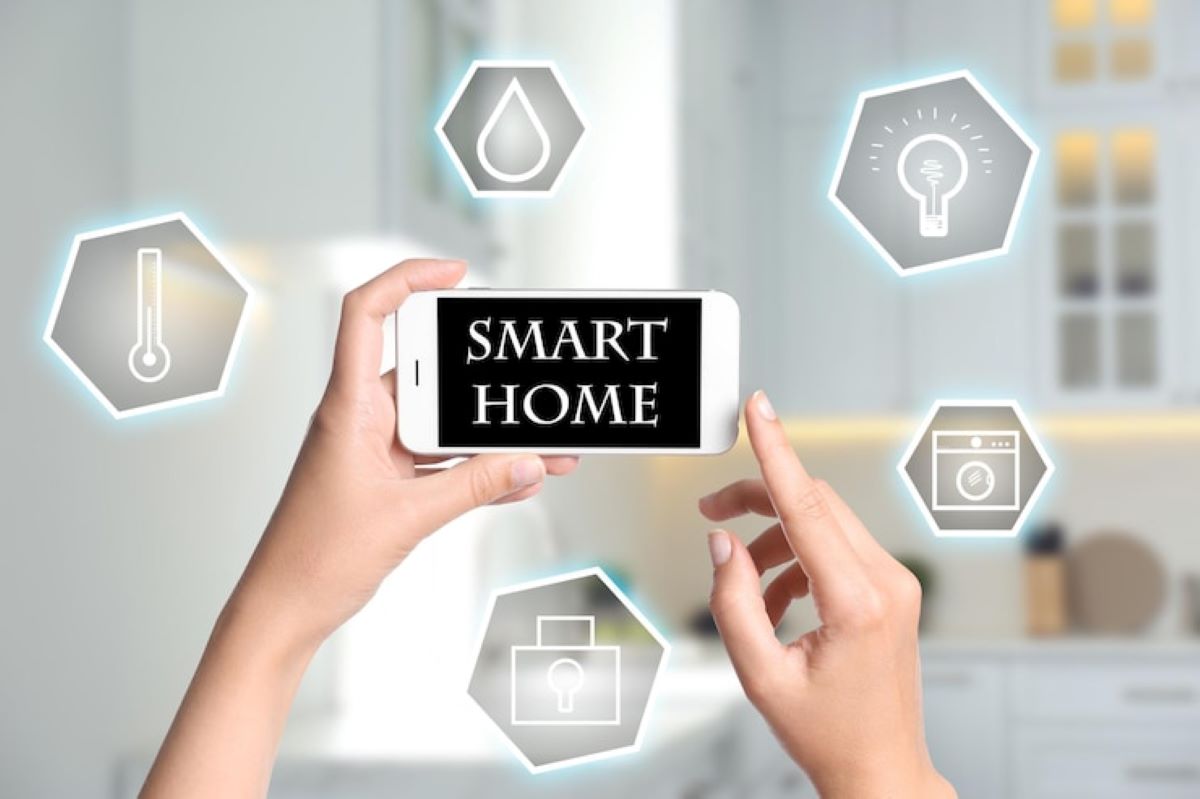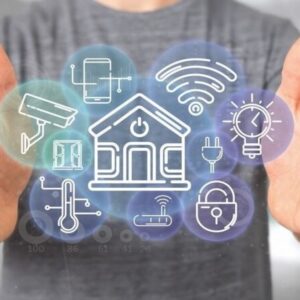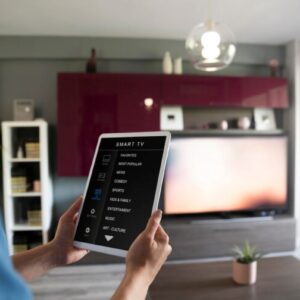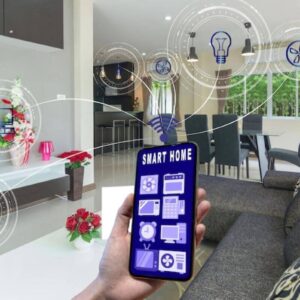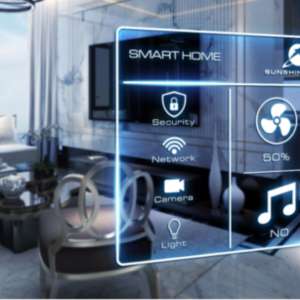Introduction
Introducing smart living, where technology seamlessly integrates into our homes, transforming them into intelligent, efficient, and connected spaces. Installing a smart home leverages cutting-edge technologies to enhance convenience, security, and energy efficiency. In essence, a smart home is an ecosystem where various devices communicate and collaborate to create an environment that responds intuitively to the needs and preferences of its inhabitants. It is beneficial to embrace smart home technology on a variety of levels. Enhanced security through advanced surveillance systems and smart locks provides peace of mind. Additionally, installing a smart home contributes to energy efficiency, reducing utility costs and environmental impacts. This introduction sets the stage for exploring the vast potential of smart home installations. If you’re considering transforming your home into a smart living space, finding the right smart home installer is crucial to ensuring a seamless and efficient integration of these technologies.
1.Planning Your Smart Home Setup
A. Assessing Your Home’s Infrastructure
Before embarking on your installing a smart home journey, take stock of your home’s infrastructure. Evaluate the compatibility of existing systems, such as electrical wiring and network capabilities. This assessment guides the selection of devices seamlessly integrating with your home, ensuring a smooth and effective installation of smart home installations. To simplify this process, consider consulting a professional smart home installer who can provide expert guidance and ensure seamless integration of smart devices into your home.
B. Identifying Key Areas for Automation
Identifying key areas for automation is crucial for a tailored smart home experience. Consider the rooms and functionalities that would benefit most from automation, such as the living room for entertainment systems, bedrooms for climate control, and entry points for security measures. This strategic approach ensures that your smart home, especially when installing a smart home, addresses your needs and priorities.
C. Budgeting for Smart Home Investments
While the benefits of a smart home installation are vast, it’s essential to establish a realistic budget for your investments. Smart home devices range in price, and a thoughtful budgeting strategy allows you to prioritize the most impactful installations. This section guides you in setting a budget that aligns with your goals, helping you make informed decisions as you plan your smart home setup. Additionally, consider exploring cost-effective alternatives and phased implementations to ensure your smart home journey is both efficient and economical
2.Choosing Smart Home Devices
A. Overview of Available Devices
The world of smart home devices is expansive, offering a diverse range of solutions to elevate various aspects of daily life. From intelligent thermostats and lighting systems to connected security cameras and voice-controlled assistants, this section provides an overview of the available devices. Understanding the functionalities of each device type empowers you to curate a customized smart home that caters to your preferences and requirements. Delving into the process of installing a smart home, you’ll discover how these devices seamlessly integrate into your living spaces, enhancing convenience and efficiency.
B. Selecting Smart Lighting Solutions
One of the foundational elements of a smart home is intelligent lighting. This subsection explores the variety of smart lighting solutions available, from color-changing bulbs to automated schedules. Learn how smart lighting not only enhances ambiance but also contributes to energy efficiency by allowing you to fine-tune illumination based on specific needs and moods with smart home installation. Discovering the nuances of installing a smart home, you’ll find insights into seamlessly incorporating intelligent lighting solutions, transforming your living spaces into versatile environments tailored to your preferences.
C. Smart Thermostats and Climate Control
Efficient climate control is a cornerstone of smart home living. Dive into the realm of smart thermostats that adapt to your schedule, optimize energy usage, and provide remote control capabilities. Explore how these devices integrate with other smart components, creating a cohesive climate control system that ensures comfort while reducing energy consumption.
D. Home Security and Surveillance Systems
A smart home installer securing your home goes beyond traditional methods. Discover the advancements in home security through smart surveillance systems, doorbell cameras, and smart locks. This section guides you in selecting devices that fortify your home’s defenses while offering convenient features like remote monitoring and access control.
3.DIY vs. Professional Installation
A. Pros and Cons of DIY Installation
Embarking on a do-it-yourself (DIY) installation journey offers a sense of accomplishment and cost-saving benefits. This section weighs the pros and cons of DIY installation, highlighting the empowerment it provides homeowners who relish hands-on projects. From smart plugs to light bulbs, explore the feasibility of handling installations independently.
B. Hiring Professional Installation Services
For those seeking a seamless and professionally executed smart home setup, hiring professional installation services may be the preferred route. This subsection delves into the advantages of enlisting experts for complex installations, ensuring optimal performance, and minimizing the risk of errors. Evaluate when professional services are the ideal choice for your specific needs.
C. Ensuring Compatibility and Integration
Whether opting for DIY or professional installation, ensuring compatibility and integration is paramount. Discover how to avoid common pitfalls by verifying device compatibility, understanding communication protocols, and selecting devices that seamlessly work together. This section guides you in creating a harmonious smart home ecosystem that functions cohesively.
4.Step-by-Step Guide For Installing A Smart Home
A. Preparing Your Home for Installation
Before delving into the installation process, meticulous preparation is key. This subsection details the preparatory steps, including securing a stable Wi-Fi network, organizing tools, and ensuring a clutter-free workspace. By laying a solid foundation, you set the stage for a smooth and efficient installation of your smart home devices.
B. Connecting Smart Home Hubs
Smart home hubs serve as command centers, facilitating communication between various devices. Learn the essentials of connecting and configuring smart home hubs. Whether it’s a dedicated device or a virtual hub within a smartphone app, this guide ensures you establish a centralized control hub for your entire smart home ecosystem.
C. Setting Up Individual Devices
With your hub in place, the focus shifts to setting up individual devices. This subsection provides step-by-step instructions for connecting and configuring different types of devices, including smart lighting, thermostats, security cameras, and more. Gain insights into device-specific nuances, ensuring a successful integration into your smart home network.
D. Configuring Automation Sequences
The true magic of a smart home lies in automation sequences. This section explores the creation of automation routines, allowing your devices to work harmoniously without constant manual intervention. Whether it’s setting up automated lighting schedules, climate control routines, or security protocols, discover how to tailor your smart home to align with your lifestyle.
5.Enhancing Home Security with Automation
A. Integrating Smart Locks and Access Control
Smart locks revolutionize home security by offering advanced access control features. Explore the integration of smart locks into your smart home system, allowing for secure, keyless entry, remote monitoring, and personalized access permissions. This subsection delves into the enhanced security measures provided by these intelligent access solutions.
B. Surveillance Cameras and Monitoring
Comprehensive surveillance is the cornerstone of a secure smart home. Discover the intricacies of integrating smart cameras into your home security system. From choosing optimal camera placements to configuring motion detection and monitoring features, this guide empowers you to create a robust surveillance network.
C. Alarm and Intrusion Detection Systems
Augmenting your security measures involves the implementation of smart alarm and intrusion detection systems. Learn how these systems utilize sensors, detectors, and alarms to safeguard your home. Understand the customization options available, allowing you to tailor intrusion detection to your specific security needs.
6.Maximizing Energy Efficiency
A. Smart Thermostats and Climate Automation
Efficient climate control not only enhances comfort but also contributes to energy savings. Dive deeper into maximizing energy efficiency through smart thermostats and climate automation. Learn how these devices adapt to your routines, optimize energy usage, and contribute to a greener, more sustainable home.
B. Energy Monitoring and Consumption Analysis
Take control of your energy consumption with smart home devices that offer real-time monitoring and analysis. This subsection explores energy monitoring solutions, provides insights into usage patterns, and identifies opportunities for optimization. Discover how a smart home contributes to reduced energy bills and a more environmentally conscious lifestyle.
C. Implementing Eco-Friendly Practices
Beyond monitoring, smart homes enable eco-friendly practices through automation. Explore how scheduling, occupancy sensors, and intelligent lighting contribute to energy conservation. This section guides you in implementing sustainable practices that align with your environmental goals while maintaining a comfortable living environment.
7.Customizing Smart Lighting Solutions
A. Creating Lighting Scenes
Immerse yourself in the world of ambiance customization with smart lighting scenes. Learn how to create personalized lighting scenarios tailored to specific activities or moods. Whether it’s a cozy movie night or a vibrant dinner party, discover the art of setting the perfect lighting scene with your smart home devices.
B. RGB and Color Temperature Adjustments
Explore the vibrant possibilities of RGB lighting and color temperature adjustments. This subsection delves into the creative potential of adjusting colors to suit different occasions or match your preferred aesthetic. From warm hues to cool tones, unleash the full spectrum of colors available with smart lighting solutions.
C. Automated Lighting Schedules
Efficiency meets convenience with automated lighting schedules. Uncover the benefits of setting up schedules that align with your daily routines. Whether it’s waking up to gentle lighting in the morning or creating a welcoming home upon your return in the evening, automated lighting schedules enhance both energy efficiency and lifestyle convenience.
8.Voice-Controlled Smart Homes
A. Integration of Voice Assistants
Voice-controlled assistants like Amazon Alexa and Google Assistant serve as the vocal interface for your smart home. Explore the integration of these assistants into your ecosystem and understand how they facilitate seamless communication between you and your devices. This section provides insights into the compatibility and functionalities offered by leading voice assistants.
B. Setting Up Voice Commands
Unlock the full potential of your smart home by setting up personalized voice commands. Learn how to configure voice-controlled actions for various devices, enabling you to control lighting, climate, entertainment, and more with simple spoken instructions. This subsection guides you through the process of creating a customized and intuitive voice-controlled smart home installer experience.
C. Hands-Free Control of Smart Devices
Experience the convenience of hands-free control as you delve into the practical applications of voice commands. Whether you’re cooking in the kitchen, relaxing in the living room, or getting ready for bed, discover how voice-controlled smart devices enhance accessibility and streamline daily tasks. Embrace the future of smart living with seamless, hands-free interactions.
8.Future Trends in Smart Home Technology
A. Emerging Technologies and Innovations
The world of smart home technology is dynamic, with continuous advancements shaping the future. Explore emerging technologies such as edge computing, artificial intelligence, and improved connectivity standards. Understand how these innovations contribute to an even more sophisticated and interconnected smart home ecosystem.
B. Continuous Evolution of Smart Homes
Smart homes are in a constant state of evolution. This subsection reflects on the ongoing evolution of smart home technology, highlighting the iterative improvements that enhance user experiences. From software updates to new device releases, staying informed about the latest developments ensures your smart home remains at the forefront of innovation.
C. Anticipated Developments in Home Automation
Look ahead to the anticipated developments in home automation. From increased interoperability between devices to enhanced security protocols, this section explores the trends that are poised to shape the future of smart homes. Stay ahead of the curve and prepare for the exciting possibilities that lie ahead in the realm of home automation.
Conclusion
In conclusion, this ultimate guide unravels the intricate world of installing a smart home, offering a roadmap from planning to embracing the cutting edge. As technology continually evolves, the interconnected web of devices promises a future where homes anticipate and adapt to our needs seamlessly. Through smart living, we not only enhance convenience and security but also pave the way for sustainable, efficient, and personalized lifestyles. Let this guide be a catalyst for transforming your home into a masterpiece of technology where innovation and comfort harmoniously coexist. Welcome to the limitless possibilities of smart living.
Frequently Asked Questions (FAQ’s)
Q: How do I start building a smart home?
Ans: Begin by assessing your home’s infrastructure and identifying key areas for automation.
Q: Are DIY installations safe for smart home devices?
Ans: Yes, with proper research and precautions, DIY installations can be safe and rewarding.
Q: What are the essential devices for a smart home?
Ans: Key devices include smart lighting, thermostats, security cameras, voice assistants, and smart locks.
Q: Can I integrate different smart devices brands?
Ans: Yes, many devices are designed to be compatible across various brands for seamless integration.
Q: Can smart homes be a part of the future?
Ans: The future holds advancements in AI, connectivity, and user-centric innovations for smarter and more intuitive homes.

